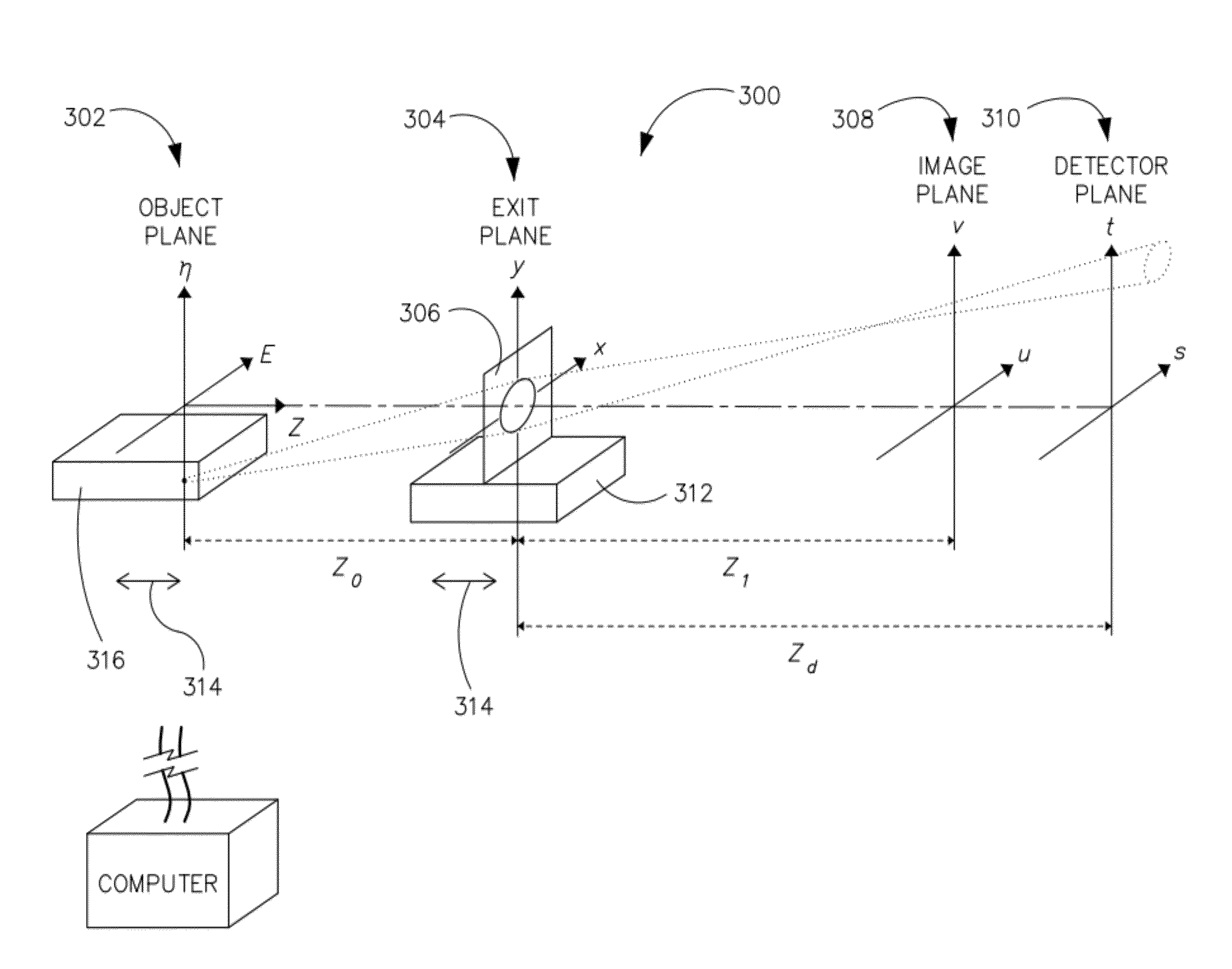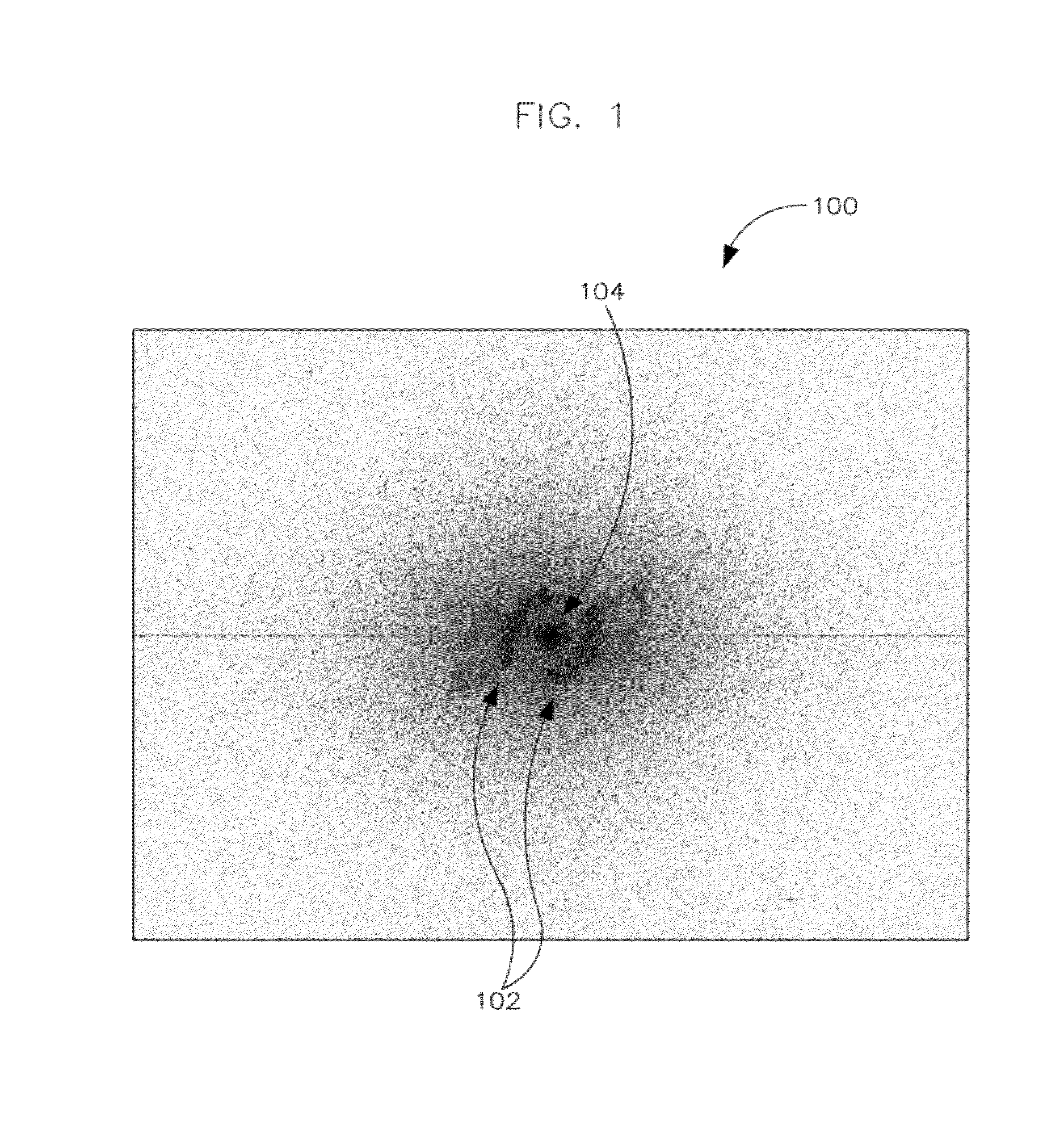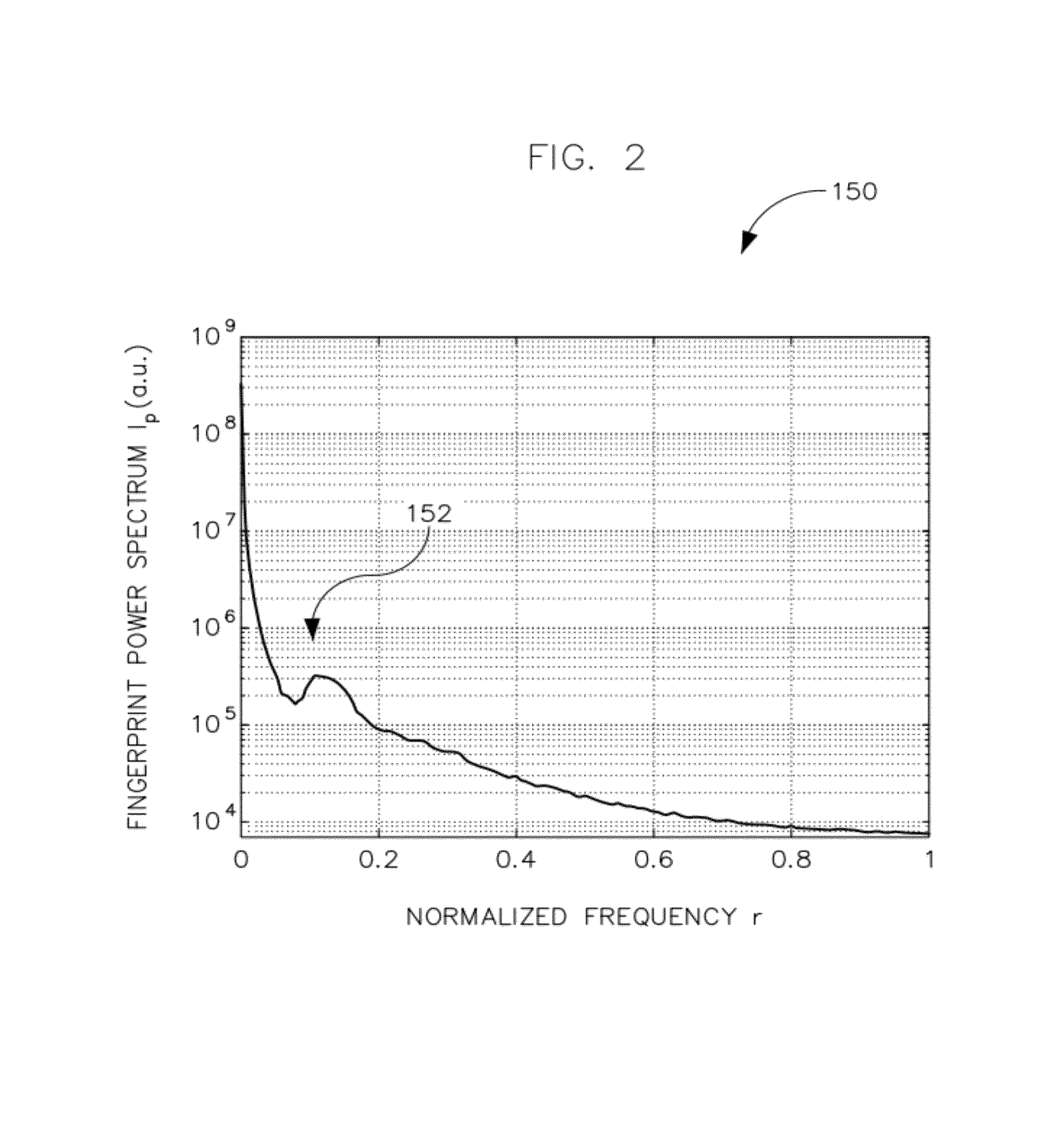System and method for depth from defocus imaging
a technology of depth from defocus and imaging, applied in the field of contactless multifingerprint collection devices, can solve the problems of generating poor quality fingerprint images, reasonable error estimates, and significant drawbacks of contact-based fingerprint readers
- Summary
- Abstract
- Description
- Claims
- Application Information
AI Technical Summary
Benefits of technology
Problems solved by technology
Method used
Image
Examples
Embodiment Construction
[0024]According to the invention, a mathematical model is used that governs lens behavior. The model is affected by object distance and physical characteristics of the lens (i.e., aberrations, focal length, etc. . . . ). Information from focus planes (DFF) and from an amount of defocus (DFF) is combined to yield a depth map. Following is a description of an algorithm for a contactless fingerprint imaging system according to embodiments of the invention. However, the invention is not limited to such a system and it is contemplated that the disclosed invention may be applicable to any imaging system that uses passive depth estimation from a set of slightly defocused images such as 3D microscopic profilometry for inspection in industrial applications, 3D borescope imaging, 3D in-situ medical imaging, 3D consumer cameras (with proper focus shifting lenses), passive imaging for 3D target recognition (defense or security industries), and the like.
[0025]FIG. 1 illustrates a typical fingerp...
PUM
 Login to View More
Login to View More Abstract
Description
Claims
Application Information
 Login to View More
Login to View More - R&D
- Intellectual Property
- Life Sciences
- Materials
- Tech Scout
- Unparalleled Data Quality
- Higher Quality Content
- 60% Fewer Hallucinations
Browse by: Latest US Patents, China's latest patents, Technical Efficacy Thesaurus, Application Domain, Technology Topic, Popular Technical Reports.
© 2025 PatSnap. All rights reserved.Legal|Privacy policy|Modern Slavery Act Transparency Statement|Sitemap|About US| Contact US: help@patsnap.com



